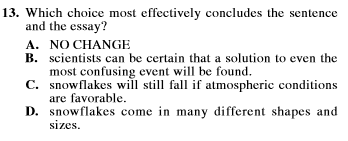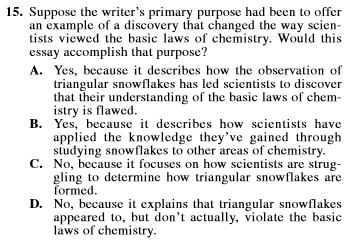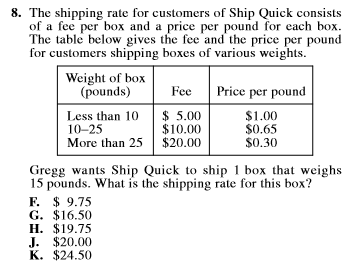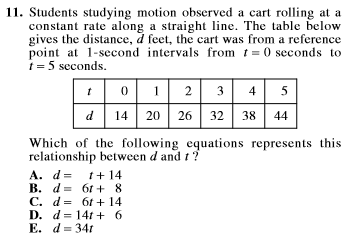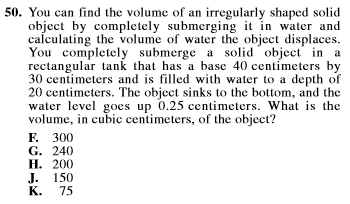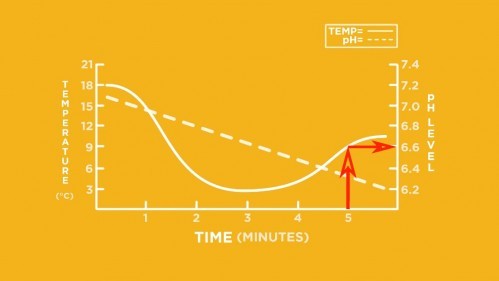“Can you help me with test anxiety?” #30secondswiththeCEO
#1 Skill Needed to Score Well on the ACT May Be Reading Comprehension
Often, I hear from parents of students who have recently received ACT scores between 13 and 17. They are concerned that the low ACT score is going to limit their student’s college options and don’t know what skills to begin addressing.
Standardized tests don’t always accurately reflect what a student really knows or his capabilities, and sometimes students just have an off day on the day of the test.
However, more often than not, low ACT scores are symptomatic of one prevailing problem: poor reading comprehension. A student who has weak reasoning and math skills may score poorly on the math and science tests. A student who doesn’t understand the basics of grammar and punctuation will likely score poorly in English. But the student who doesn’t read well will be penalized on all four subject tests. As strange as it may sound, many times low ACT scores can be traced back to a student’s ability to read and comprehend.
(All of the released ACT items below are from 2015-2016 Preparing-for-the-ACT Guide and are the property of ACT Inc., not 36 University.)
The English Test and Reading Comprehension
Examine the two items below. By my count, they are representative of 24 of the 75 English items from the 2015-2016 Guide, and they require strong reading comprehension skills! As you can see, a struggling reader will struggle with the English test.
(If you missed our recent post The Juggling Act Required by the ACT, click here.)
The Math Test and Reading Comprehension
Maybe it’s not surprising that the English test requires strong reading skills, but the math test is text-heavy also. In fact, 39 of the 60 items from the 2015-2016 Preparing-for-the-ACT Guide required students to read at least 3 lines of text. Not all math items are like the three shown below, but many of them are.
The Reading Test and Reading Comprehension
Of course, the reading test is all about reading comprehension, and it’s one-fourth of an ACT score! Sure, a fair number of the 40 items ask students to interpret meaning from what is explicitly stated in the text. However, a fair number also ask students to reason implicitly to determine inferences, main idea, compare and contrast, etc. It comes as no surprise that strong reading skills are required to score well on the reading test.
The Science Test and Reading Comprehension
To understand the importance of reading skills on the science test, you must first understand the test’s format. The science test consists of six or seven separate scenarios. One of those scenarios is comprised of only text, usually four or five paragraph’s worth. It is like a mini version of a reading scenario. All of the other scenarios require a significant amount of reading, too. In the 2015-2016 Preparing-for-the-ACT Guide, the other five passages accounted for another 19 paragraphs, almost 4 paragraphs per scenario.
To give you an idea of a typical ACT science passage, we have provided a sample passage from the same ACT publication we’ve used for this entire post:
Summary
As you can see, reading comprehension skills are needed on every section of the ACT. Scores in the 13 – 17 range are often a result of insufficient reading skills and not from a lack of content knowledge.
What Can I Do?
Be intentional! In your casual reading—through a news article, or your favorite blog, or that new novel—stop occasionally and ask yourself some very specific questions:
“What was the main idea of that paragraph?” (Try to summarize in 5 words or less.)
“Were the paragraph’s sentences presented in a logical sequence?”
“What was the main idea of the passage?”
“Were the paragraphs within the passage placed in a logical sequence?”
Intentionally evaluating and critiquing your reading material will make you a better reader and writer – and an improved ACT score will be a by-product of your new skills!
Recent and Related Posts
Get a Copy of Your ACT and Fix the Mistakes
The Juggling Act Required by the ACT English Test
3 Types of Probability Items to Expect on the ACT Math Test
Your Week-Before-the-ACT Game Plan (Part 4 of 4: Science)
This is the final installment of our week-before-the-ACT game plan. Let us know how your game plan works on the big test!
The Setup
It’s nice to finish off the ACT with another shorter test. The Science Test, like the preceding Reading Test, will give you 40 minutes to answer 35 items. Those 35 items will be spread over 6 to 7 scenarios.
The Tables Have So Many Rows and Columns
Do you need to be reminded how complicated ACT Science tables can get? ACT is an expert at packing a ton of info into a single table. And the more information they put in a table, the more confusing and intimidating the table is likely to be.
Use one simple principle to read the tables efficiently: the first column almost always tells you WHO the table is about, and the rest of the columns tell you WHAT they are going to tell you about the WHO. Take the table below, for instance. The table is about different months. For each of those months, the table gives you the temperature, the pH, and the dissolved oxygen reading. This principle works no matter how difficult the table becomes.
And The Graphs Have So Many Plots and So Many Axes
Do they have to display so many relationships on a single graph? Along with multiple graphed relationships, you are often given multiple x- and y-axes. Yes, the graphs can get complicated in a hurry. Your ability to locate relevant information and interpret it will be crucial. Follow these two steps to simplify the process:
- Use the key to figure out which graph corresponds with which axis. In the graph below, you see the solid temperature graph corresponds with the axis on the left, and the dashed pH graph corresponds with the axis at the right.
- Be prepared to trace lines to find specific values. Can you find the pH level at the 5-minute mark? Start at the 5-minute mark and draw a line up to the solid pH line. From there, trace right to the pH axis. The pH is about 6.6.
What About the Text-Only Passage?
The Conflicting Viewpoints scenario will be the only scenario comprised of only text. Several viewpoints will be presented. As you read the viewpoints, underline key details from each, making sure to note how they differ. You will be asked to differentiate between the perspectives.
A Game Plan
Read the introductory text of each scenario carefully. The text is used to explain the setting of the research or experiments. Understanding the setting is often critical to interpreting the tables and graphs correctly.
For each table, identify WHO the table is about and WHAT they are going to tell you about the WHOs. For graphs, note the input axis label (horizontal axis) and the output axis label (vertical axis) and check to see if there is a key. You will not likely need to spend any significant time reading the tables and graphs before you get to the questions. Use the questions to tell you where to focus on the tables and graphs.
Many of the more difficult items will require you to synthesize information from several pieces of the scenario. Information found in the text may be key to understanding a table. Data from two graphs may be required to answer a single item. Many times, these difficult items are found in the final few questions of a scenario.
Recent Posts:
Your Week-Before-the-ACT Game Plan (Part 3 of 4: Reading)
Your Week-Before-the-ACT Game Plan (Part 2 of 4: Math)
Your Week-Before-the-ACT Game Plan (Part 1 of 4: English)
Your Week-Before-the-ACT Game Plan (Part 3 of 4: Reading)
This is the 3rd part in our 4-part series on finalizing your game plan the week before the ACT. It’s time to put a game plan in place for the Reading Test.
The Setup
There is no mystery here: you’ll have 35 minutes to answer 40 items. The 40 questions will be evenly divided over 4 passages. Each passage is fairly lengthy – almost 750 words (a little shorter than this blog post). Oh yeah, don’t forget that one of the passages will likely have two separate texts. That’s a relatively new twist. The first 6 or 7 items on the “double text” passage will ask you about the passages separately. The last few will ask you to evaluate relationships between the passages. If you want to give a double text passage a try, click here.
Start with the Questions or the Passage?
Some students insist on reading the questions before they head to the text. Some of these students even go so far as scavenging through the passage looking for answers rather than reading it. Students who use this approach often have difficulty perceiving big picture concepts like main idea or author’s purpose, and we know those questions will be asked. Students who have taken several ACT Reading tests should have a pretty good idea of the types of questions they ask already (more on this shortly). Other than knowing which details are targeted in the questions, there isn’t much to gain by reading the questions first. I suggest starting with the passage, reading slowly enough to remember details and at the same time looking to piece together the big picture.
Even students who read the passage often read it so hurriedly they miss key information. Either the average student reads almost twice as quickly as I do (in my experience, they usually get to the questions in about 2 minutes and it takes me about 4), or they aren’t reading carefully enough. Speeding through the passage in order to start the questions ends up costing students time because they find themselves having to reread a large portion of the passage to find answers. I find if I take my time reading the passage, making sure I understand the text, then I can run through the questions quickly enough to stay on pace.
The Passages Change; The Questions Stay the Same
As I mentioned earlier, we know what questions they are going to ask. Sounds rather bold, right? It’s not, really. Reading comprehension means essentially the same thing whether you’re reading an ACT passage or the sports page or Moby Dick. Skilled readers are able to visualize and remember details while staying sensitive to a passage’s purpose and tone. The ACT’s questions are going to test how well you remember those details and how well you comprehend purpose and tone, too.
So, here’s what you can expect from each set of 10 items. There will be several questions based on what is explicitly stated in the text. Usually these answers can be found in a particular sentence or two within the passage. We call these Level 1 items. Level 2 items will ask you to read between the lines to figure out what the author meant. These answers will usually be found in a specific area of the text. You may have to reread a few sentences. And the most difficult items will test your understanding of the passage on a larger scale: Why is the purpose of the 3rd paragraph? What is the main idea of the passage? We call these Level 3 items. These are precisely the types of questions that may give you trouble if you choose the scavenger hunt approach.
A Game Plan
My game plan for attacking the ACT Reading is something like this:
Though the passages seem lengthy, this is one of the ACT’s shorter sections. There are only 40 items, and it will be over in 35 minutes. That’s good, because it won’t leave me mentally drained. Stay calm and confident. Keep a steady, moderate pace. Read the passages carefully, underlining details that seem important. Details will help me answer Level 1 and Level 2 questions. At the same time, prepare for Level 3 items by observing the structure of the passage and noting the writer’s perspective and purpose. On average, I have a little less than 9 minutes per section. From previous practice, I know I can comfortably read through most passages in about 4 minutes, leaving me about 5 minutes for the questions.
If your approach is radically different than mine, now is probably not the time to change it up. Write out your own game plan, one that matches what you have already practiced. At the end of the day, you want to be confident your approach gives you the best opportunity to make your best score.
Recent Posts:
Your Week-Before-the-ACT Game Plan (Part 2 of 4: Math)
Your Week-Before-the-ACT Game Plan (Part 1 of 4: English)
Your Week-Before-the-ACT Game Plan (Part 1 of 4: English)
Sports Teams Do This; You Should, Too!
Football teams that compete at a high level review hours of their opponent’s game film. Similarly, you’ve already reviewed frequently-tested ACT topics. Teams spend hours implementing a game plan and strategy. You’ve already taken self-timed, self-scored practice tests–you’re that serious! Before the big game, teams will have a walk-through, going over strategy one more time to make sure the game plan is fresh on their minds and fine-tuned. Now is your time to put the final pieces in place, fine-tune your strategy, and build confidence before you step into the academic arena on Saturday.
Here’s part one of that final walk-through to put the finishing touches on your ACT Prep. You won’t be surprised that we start with English because, as you already know, it’s the first section you’ll see on Saturday.
Monday’s Game Plan: Walk Through a Released ACT English Test
Before you start, remind yourself what to expect. My mental monologue goes something like this:
There will be 75 items. I’ll have 45 minutes. (I like to tell myself that’s about 30 seconds per item. It makes keeping track of time easy: if I have 10 items left, I should have about 5 minutes left.) There will be 5 passages, each with 15 items. I expect the first 11 or 12 items to ask me to evaluate local issues–fix sentences, fix transitions, etc. I expect the last few items to ask me to evaluate on a larger scale–analyze paragraph arrangement, determine purpose of passage, etc. So, as I read through a passage, I need to be able to focus on details while piecing together the big picture. I know I’ll need to do this for five passages.
I’ve shared part of my thought processes; spend some time creating your own strategy for tackling the ACT English section.
Now it’s time for action. Grab a released ACT English test. If needed, print from the latest guide released by ACT. Rehearse your expectations and game plan. Then open the exam and skim through the items–not necessarily working them–to test your expectations. Make notes on anything that surprised you or anything you may need to remind yourself of later in the week.
Do you have any tips you would like to add? Please post below. We look forward to reading your comments.
Look for the 36U Week-Before-the-ACT Guide Part 2 tomorrow!
-Kendal Shipley, Ed.D.

